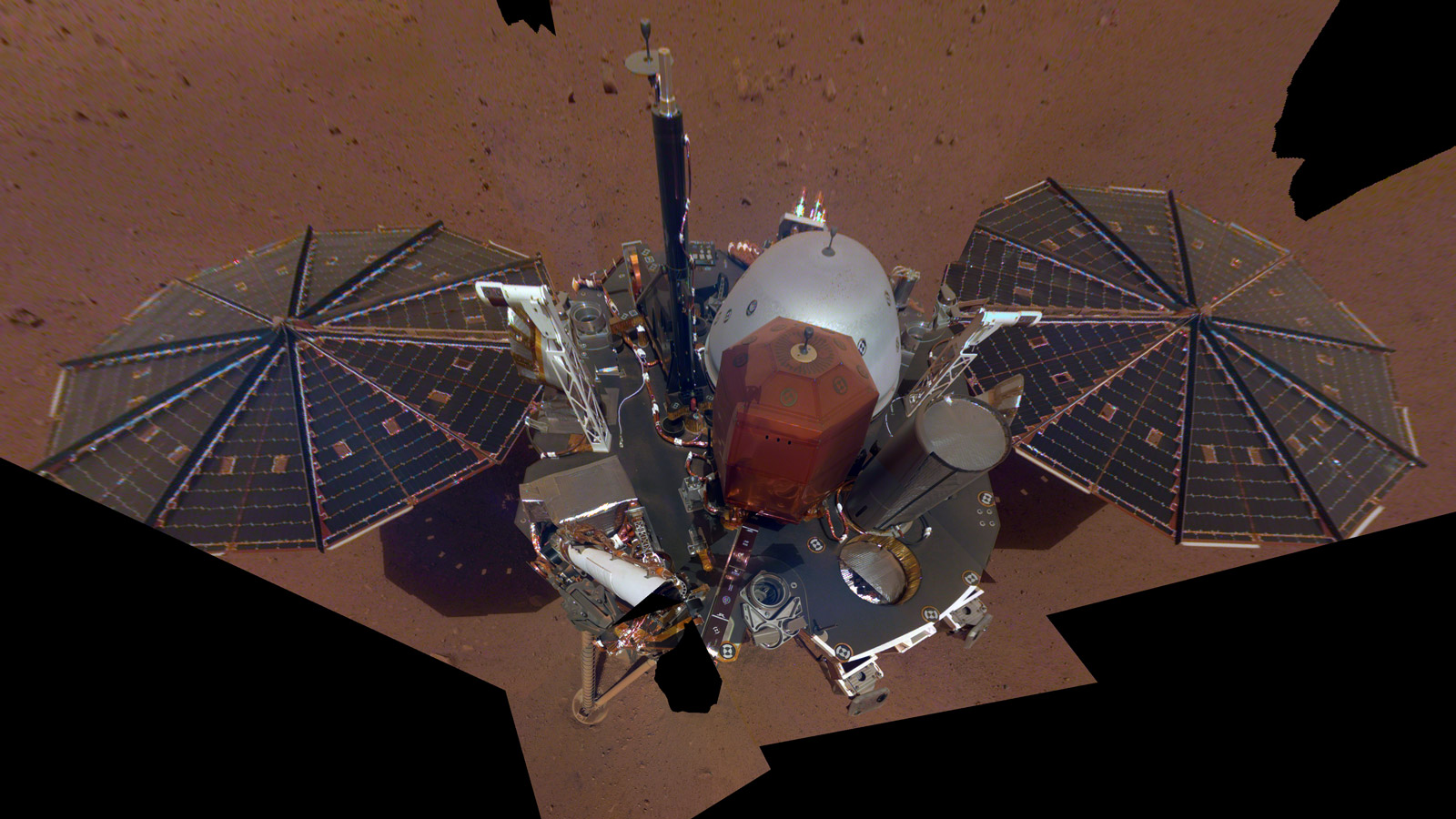
How time does fly: NASA's InSight Mars lander has now been on the Red Planet for a full (Earth) year.
InSight aced its "6 minutes of terror" entry, descent and landing on Nov. 26, 2018, setting off some wild and delightfully nerdy celebrations at NASA's Jet Propulsion Laboratory in Pasadena, California, which runs the mission.
The past year has been a very eventful one for the stationary InSight, which is probing the Martian interior like never before. The lander's supersensitive seismometer suite has detected more than 150 vibration events to date, about two dozen of which are confirmed marsquakes. But InSight's other primary science instrument, a burrowing heat probe called the Heat Flow and Physical Properties Package (HP3), has had tougher sledding.
Related: Mars InSight in Photos: NASA's Mission to Probe Martian Core
HP3's self-hammering tool, dubbed "the mole," has been able to dig the instrument just a foot (0.3 meters) or so underground to date, instead of the desired 10 to 16 feet (3 to 5 m). The mole has also popped out of its burrow unexpectedly. InSight team members are troubleshooting these issues, which may be caused by the weirdness of Mars' soil, and they've made some progress recently.
The solar-powered InSight is scheduled to operate for at least two Earth years on the Martian surface. The data gathered by the mission, whose name is short for "Interior Exploration using Seismic Investigations, Geodesy and Heat Transport," should help scientists better understand how rocky planets form and evolve, NASA officials have said.
Yesterday wasn't the only anniversary for a NASA Mars robot. The agency's Curiosity rover launched from Florida on Nov. 26, 2011, kicking off an eight-month cruise to the Red Planet. The nuclear-powered Curiosity has determined that its landing site, the floor of the 96-mile-wide (154 kilometers) Gale Crater, could have supported Earth-like life in the ancient past. And the car-size rover is still going strong today, climbing up the slopes of the 3.4-mile-high (5.5 km) mountain that rises from Gale's center.
Get the Space.com Newsletter
Breaking space news, the latest updates on rocket launches, skywatching events and more!
- Occupy Mars: History of Robotic Red Planet Missions (Infographic)
- NASA's Mars InSight Lander: 10 Surprising Facts
- Measuring Marsquakes: How NASA's InSight Lander Will Peer Inside Red Planet
Mike Wall's book about the search for alien life, "Out There" (Grand Central Publishing, 2018; illustrated by Karl Tate), is out now. Follow him on Twitter @michaeldwall. Follow us on Twitter @Spacedotcom or Facebook.

Join our Space Forums to keep talking space on the latest missions, night sky and more! And if you have a news tip, correction or comment, let us know at: community@space.com.

Michael Wall is a Senior Space Writer with Space.com and joined the team in 2010. He primarily covers exoplanets, spaceflight and military space, but has been known to dabble in the space art beat. His book about the search for alien life, "Out There," was published on Nov. 13, 2018. Before becoming a science writer, Michael worked as a herpetologist and wildlife biologist. He has a Ph.D. in evolutionary biology from the University of Sydney, Australia, a bachelor's degree from the University of Arizona, and a graduate certificate in science writing from the University of California, Santa Cruz. To find out what his latest project is, you can follow Michael on Twitter.









